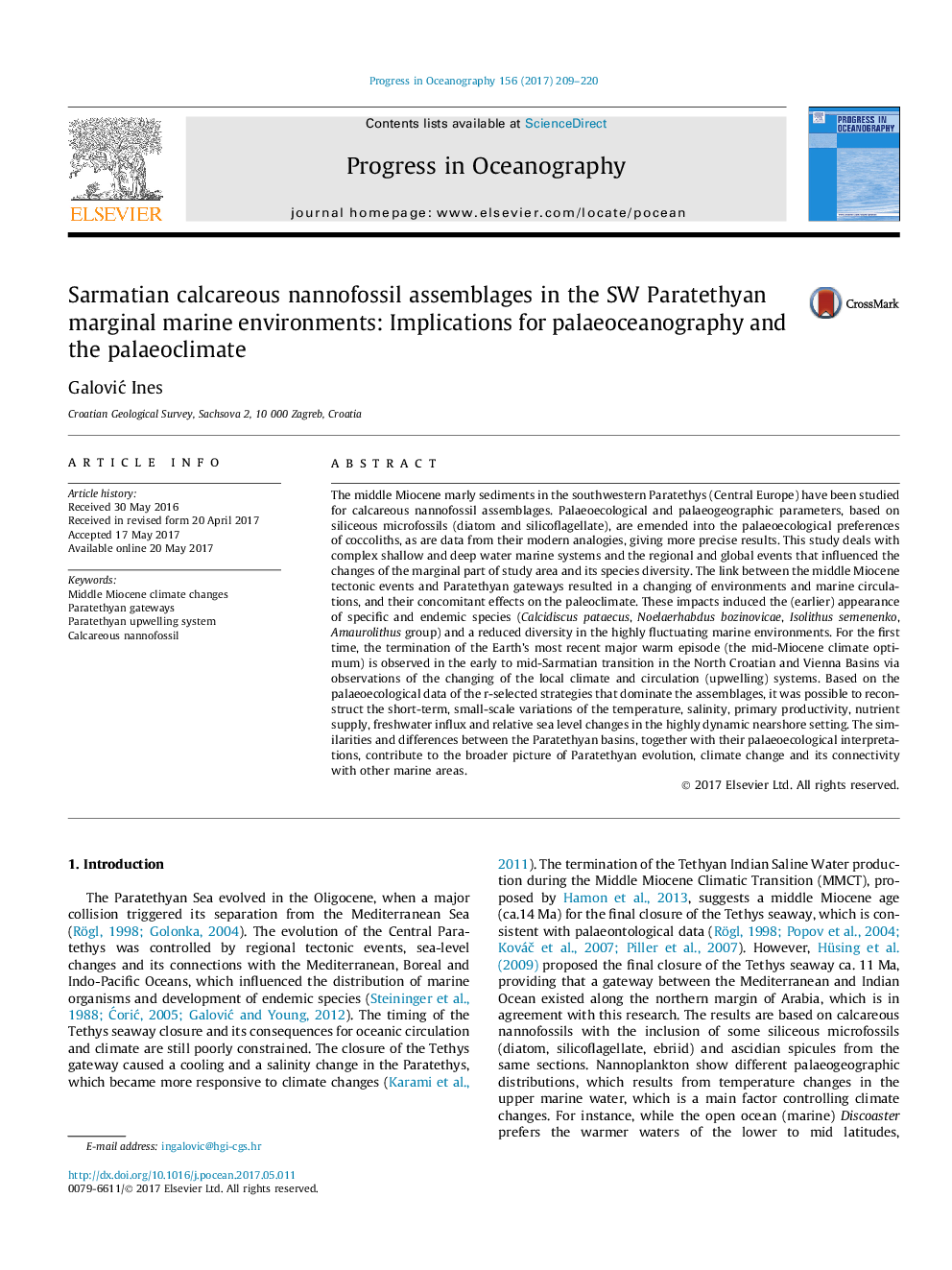| Article ID | Journal | Published Year | Pages | File Type |
|---|---|---|---|---|
| 5766484 | Progress in Oceanography | 2017 | 12 Pages |
â¢Tectonic events, sea-level changes, Tethyan and freshwater influxes are linked to calcareous nannoplankton assemblage biodiversity, endemism and species extinction/appearance in the marginal marine environments.â¢Observation of the warm boundary current from the Tethys that developed Paratethyan gyres suggests that most recent major warm episode (the middle Miocene climate optimum) lasted until the mid-Sarmatian.â¢Final closure of the Paratethys-Tethys gateway is in agreement with the final closure of the Tethys seaway determined in deeper marine sediments of the late Miocene.
The middle Miocene marly sediments in the southwestern Paratethys (Central Europe) have been studied for calcareous nannofossil assemblages. Palaeoecological and palaeogeographic parameters, based on siliceous microfossils (diatom and silicoflagellate), are emended into the palaeoecological preferences of coccoliths, as are data from their modern analogies, giving more precise results. This study deals with complex shallow and deep water marine systems and the regional and global events that influenced the changes of the marginal part of study area and its species diversity. The link between the middle Miocene tectonic events and Paratethyan gateways resulted in a changing of environments and marine circulations, and their concomitant effects on the paleoclimate. These impacts induced the (earlier) appearance of specific and endemic species (Calcidiscus pataecus, Noelaerhabdus bozinovicae, Isolithus semenenko, Amaurolithus group) and a reduced diversity in the highly fluctuating marine environments. For the first time, the termination of the Earth's most recent major warm episode (the mid-Miocene climate optimum) is observed in the early to mid-Sarmatian transition in the North Croatian and Vienna Basins via observations of the changing of the local climate and circulation (upwelling) systems. Based on the palaeoecological data of the r-selected strategies that dominate the assemblages, it was possible to reconstruct the short-term, small-scale variations of the temperature, salinity, primary productivity, nutrient supply, freshwater influx and relative sea level changes in the highly dynamic nearshore setting. The similarities and differences between the Paratethyan basins, together with their palaeoecological interpretations, contribute to the broader picture of Paratethyan evolution, climate change and its connectivity with other marine areas.
